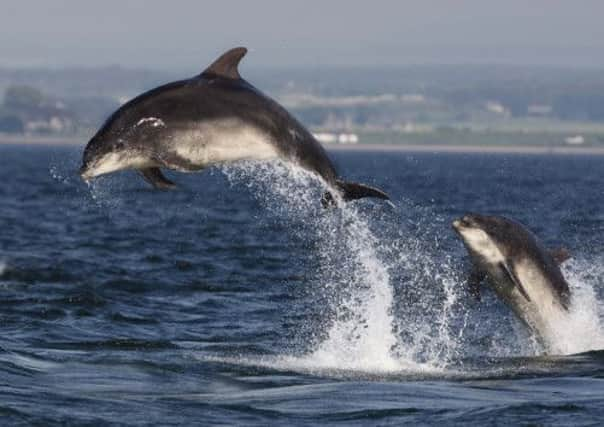Moray Firth dolphin jetski harassment claim probed


Wildlife crime officers in Inverness were contacted following an incident between Inverness Harbour and South Kessock on Sunday evening, at about 8.15pm.
They have currently seized the jetski, described as blue and white, and are aware of the owner’s identity, but have appealed for any witnesses to contact them.
Advertisement
Hide AdAdvertisement
Hide AdA Police Scotland spokeswoman said: “The enquiry is ongoing.
“The owner is known to us, but officers are still gathering evidence as to whether a wildlife crime has been committed.”
It is understood officers were contacted after several reports of alleged harassment of a dolphin and her calf.
Intentionally or recklessly disturbingwhales or dolphins is an offence contrary to the Conservation (Natural Habitats) Regulations 1994.
Moray Firth’s rare population of bottlenose dolphins have reached a record high with around 200 of the spectacular mammals visiting shores off the north-east of Scotland.
The numbers have practically doubled since the early 1990s, where figures of between 100 and 130 were recorded.
A spokesman for the Whale and Dolphin Conservation Society said the rise in numbers could be down to an increase in salmon and mackerel in the waters.
He said this was having a knock-on effect to the rare dolphin population.
Advertisement
Hide AdAdvertisement
Hide AdThe mammals are carnivores, eating mainly a diet of salmon, mackerel, catfish, rays, eels, hermit crabs and shrimps.
They can live from 20 to 50 years in the wild, grow up to 14ft and weighing around 500kg, although the Moray Firth dolphins vary from the cousins in warmer climes as they have more blubber for surviving in the North Sea.
Bottlenose dolphins have been observed to breach up to 16 feet – almost five metres – out of the water, landing with a splash on their back or side.
They can swim at speeds of over 18mph.
The dolphins are friendly, highly intelligent creatures, and locals around the Firth have seen dolphins from as long ago as 1900.
This small, isolated population of bottlenose dolphins in the Moray Firth is very vulnerable and any change or threat to their natural environment can affect breeding and reproduction rates, thus endangering the future of these dolphins.
Females produce a calf approximately every two years.
Bottlenose dolphins travel in social groups – knowns as pods or schools – and communicate with each other by a complex system of squeaks and whistles.
Schools have been known to come to the aid of an injured dolphin and help it to the surface.
Bottlenose dolphins track their prey through the expert use of echolocation. They can make up to 1,000 clicking noises per second.
Advertisement
Hide AdAdvertisement
Hide AdThese sounds travel underwater until they encounter objects, then bounce back to their dolphin senders, revealing the location, size, and shape of their target.
Bottlenose dolphins are found in tropical oceans and other warm waters around the globe.
They were once widely hunted for meat and oil (used for lamps and cooking), but today only limited dolphin fishing occurs.
However, dolphins are threatened by commercial fishing for other species, like tuna, and can become mortally entangled in nets and other fishing equipment.